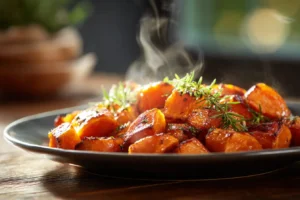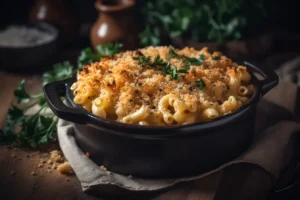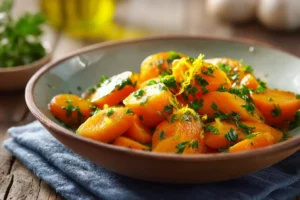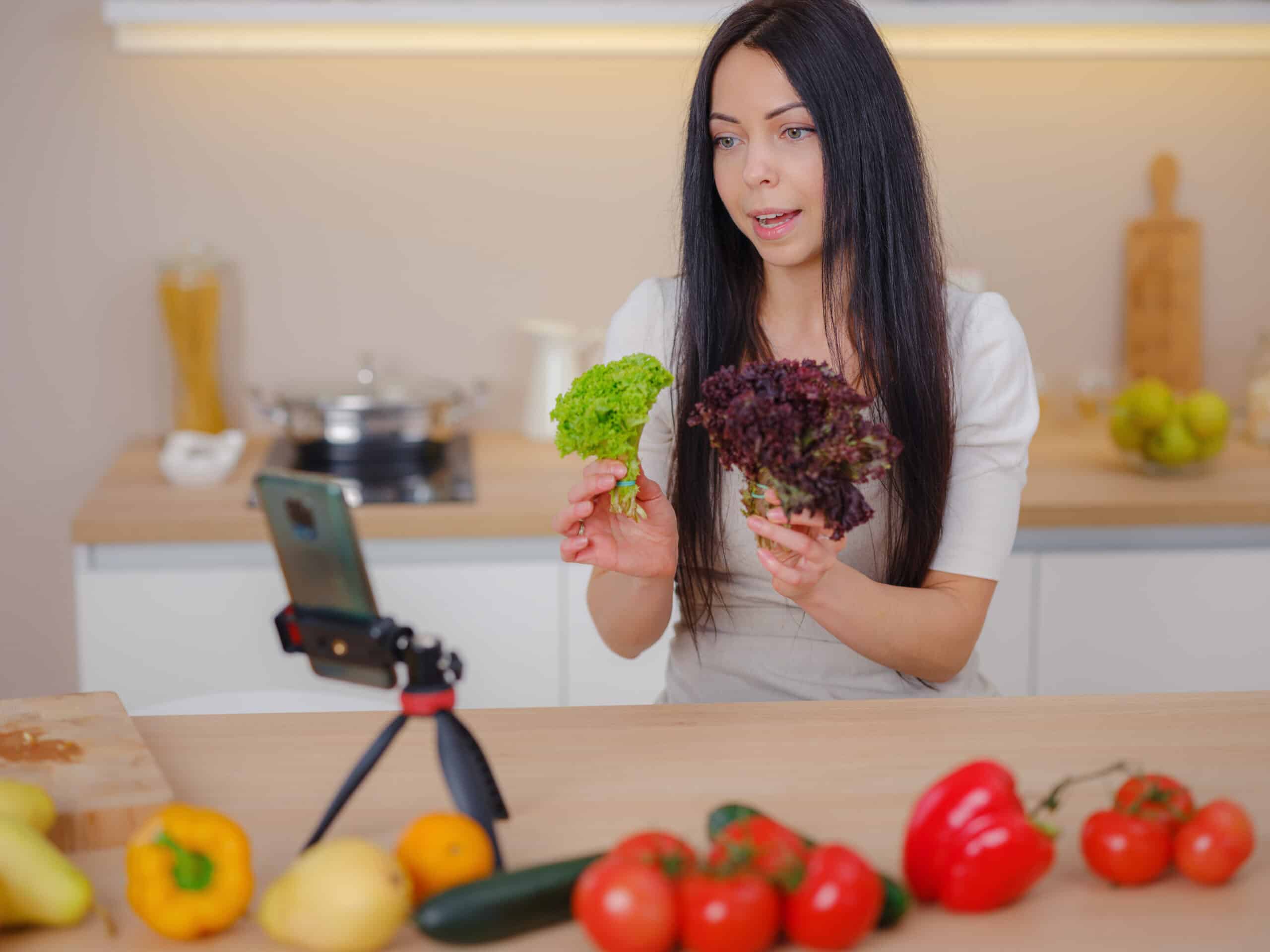If you’ve ever craved the sweet comfort of a warm, gooey chocolate chip cookie but had to dodge dairy, you’re not alone. Whether you’re lactose-intolerant, vegan, or simply curious about dairy-free baking, this complete guide to dairy free chocolate chip cookies will walk you through every step. From the best dairy alternatives to troubleshooting baking issues, we’ve broken everything down so you can bake with confidence and flavor.
Table of Contents
Check out our dairy-free banana bread—perfect with your cookie and coffee moment.
PrintDairy Free Chocolate Chip Cookies
Soft, chewy, and made without any dairy, these chocolate chip cookies are perfect for vegans, those with lactose intolerance, or anyone craving a guilt-free treat. With melty chocolate chips and the perfect golden edges, they’re a must-bake for every cookie lover.
- Prep Time: 10 minutes
- Cook Time: 12 minutes
- Total Time: 22 minutes
- Yield: 24 cookies 1x
- Category: Dessert
- Method: Baking
- Cuisine: American
- Diet: Vegan
Ingredients
1 cup vegan butter (Earth Balance or similar), softened
3/4 cup brown sugar, packed
1/2 cup granulated sugar
1 tbsp vanilla extract
2 tbsp oat milk (or almond milk)
2 1/4 cups all-purpose flour
1 tsp baking soda
1/2 tsp sea salt
1 1/2 cups dairy-free chocolate chips (e.g., Enjoy Life)
Optional: 1/2 cup chopped walnuts or pecans
Optional: Flaky sea salt for topping
Instructions
Cream vegan butter and sugars in a large bowl until light and fluffy.
Add vanilla extract and oat milk, then mix well.
In a separate bowl, whisk together flour, baking soda, and sea salt.
Gradually add dry ingredients to wet, mixing until combined.
Fold in dairy-free chocolate chips and optional add-ins.
Chill dough for 20–30 minutes.
Preheat oven to 350°F (175°C).
Scoop dough into balls and place on a parchment-lined baking sheet.
Bake for 10–12 minutes or until edges are golden.
Cool on tray for 5 minutes, then transfer to wire rack.
Notes
For extra chew, chill the dough for at least 30 minutes before baking.
Substitute almond, soy, or coconut milk based on taste preference.
To freeze: scoop dough balls, flash freeze, then store in bags for up to 3 months.
Bake straight from frozen, adding 1–2 minutes to bake time.
Nutrition
- Serving Size: 1 cookie
- Calories: 165 kcal
- Sugar: 11 g
- Sodium: 90 mg
- Fat: 8 g
- Saturated Fat: 2.5 g
- Unsaturated Fat: 5 g
- Trans Fat: 0 g
- Carbohydrates: 21 g
- Fiber: 1.5 g
- Protein: 2 g
- Cholesterol: 0 mg
Understanding Dairy-Free Baking
Why Choose Dairy-Free Cookies?
More people today are skipping dairy for health, ethical, or dietary reasons. Whether you’re lactose intolerant, following a plant-based lifestyle, or avoiding allergens, dairy free chocolate chip cookies offer a tasty solution without compromise. These treats are not only easier on your digestive system, but they’re also just as rich, chewy, and satisfying as their dairy-filled counterparts.
Traditional cookies rely heavily on butter and milk for moisture and flavor. But thanks to high-quality plant-based ingredients, dairy free chocolate chip cookies can achieve the same golden texture and gooey bite with zero dairy. In fact, many people find that non-dairy options bring out a deeper chocolate flavor and cleaner finish.
The Rise of Dairy-Free Diets and Allergy Considerations
Dairy is among the most common allergens in the United States. Millions experience bloating, gas, and discomfort after consuming milk-based products. As a result, dairy-free baking has surged in popularity—not just as a trend but as a necessary shift in food culture.
And if you’re vegan, it’s a game changer. Plant-based eaters can finally enjoy chocolate chip cookies without dairy, thanks to vegan butter, oat milk, and allergen-free chocolate chips. Plus, you’ll feel good knowing your treats are cruelty-free and inclusive.
Discover great ideas like our dairy-free ice cream to sandwich between two cookies for a dairy-free dessert dream.
Ingredients for the Perfect Dairy Free Chocolate Chip Cookies
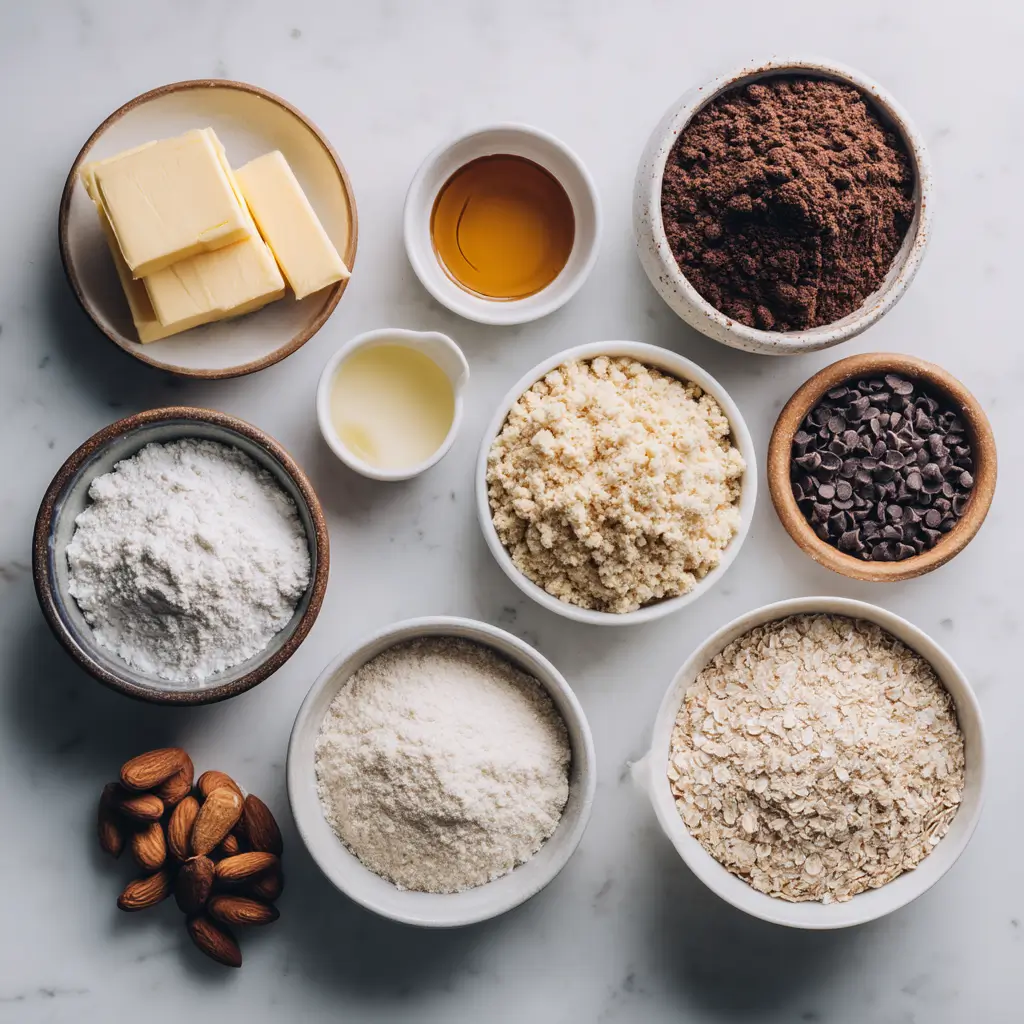
Choosing Non-Dairy Chocolate Chips
When you’re baking dairy free chocolate chip cookies, the chocolate chips are the star of the show. But not all chips are created equal—many mainstream brands contain milk fat or whey. So it’s important to check the label.
Look for brands that clearly state “dairy-free,” “vegan,” or “allergen-friendly.” Some top choices include Enjoy Life, Hu Kitchen, and Trader Joe’s semi-sweet chips. These are rich in cocoa and free from dairy, soy, and gluten.
Here’s a quick table to help you compare:
| Brand | Dairy-Free | Soy-Free | Vegan | Flavor Profile |
|---|---|---|---|---|
| Enjoy Life | Yes | Yes | Yes | Sweet, balanced, melts well |
| Hu Kitchen | Yes | Yes | Yes | Rich, dark, less sweet |
| Trader Joe’s | Yes | No | Yes | Traditional, semi-sweet |
Don’t miss our guide to dairy-free coffee creamer—a great pairing with your cookies!
Top Substitutes for Butter in Dairy-Free Baking
Butter is key for moisture and structure in cookies, but luckily, there are some amazing alternatives that work beautifully in dairy free chocolate chip cookies.
Here are your best options:
- Vegan Butter: Brands like Earth Balance and Miyoko’s Creamery replicate the taste and texture of real butter. They’re a 1:1 swap in most recipes.
- Coconut Oil: Ideal for a slight coconut flavor, this fat gives cookies a chewy texture and rich mouthfeel. Use refined coconut oil if you want to avoid the flavor.
- Avocado or Applesauce: For a healthy twist, mashed avocado or applesauce can replace butter. These add moisture and nutrients but may alter texture slightly.
Each option has its own effect on the final cookie, so experimenting a bit can help you find your perfect match.
Check out our dairy-free protein shakes-a fun way to complement your dessert routine.
Best Dairy-Free Butter Alternatives
Coconut Oil, Vegan Margarine, and Beyond
Finding the right butter substitute can make or break your dairy free chocolate chip cookies. The goal is to maintain the creaminess, spread, and structure that real butter offers—without the dairy.
Let’s break down the most popular non-dairy fats:
- Coconut Oil
Refined coconut oil is flavor-neutral and works well in cookies, giving a slightly crisp edge and soft center. Unrefined coconut oil adds a subtle coconut flavor, which pairs beautifully with dark chocolate. - Vegan Margarine
Vegan margarine is perhaps the most direct substitute for butter. Brands like Country Crock Plant Butter and Earth Balance are formulated to mimic dairy butter’s fat content and melting behavior, making them excellent for cookies. - Nut Butters (Almond, Cashew, Peanut)
Nut butters are nutrient-rich and add a robust flavor. While not 1:1 replacements, they work well in combination with other fats to boost protein and add complexity to the cookies. - Avocado or Mashed Banana
These add moisture and richness, though they do change the cookie’s texture. Expect a softer, more cake-like result—perfect for a healthier version of dairy free chocolate chip cookies.
Here’s a quick reference comparison:
| Alternative | Best For | Texture | Flavor Impact |
|---|---|---|---|
| Coconut Oil | Chewy edges, firm centers | Slightly crisp | Mild to coconutty |
| Vegan Margarine | Classic cookie style | Buttery, rich | Minimal |
| Nut Butters | Protein-rich cookies | Dense, chewy | Nutty |
| Avocado/Banana | Healthier alternatives | Soft, cake-like | Slightly fruity |
Looking for more dairy-free inspiration? Try our guide on whether vegan means dairy-free.
Does Dairy-Free Butter Work the Same in Cookies?
In short—yes, it works quite well. Most dairy-free butters are formulated with a similar fat percentage to real butter (about 80%), which helps mimic the spread and bake of traditional cookies.
However, here are a few tips to get it just right:
- Chill the dough before baking, especially when using soft margarine. This prevents excessive spreading.
- Use parchment paper instead of greasing the tray. Some plant-based butters contain more water and can cause sticking.
- Test bake one cookie before doing the full batch. This helps you adjust temperature and time for your specific ingredients.
The more you experiment, the more you’ll find your sweet spot. Whether it’s coconut oil or a top-tier vegan butter, these swaps prove that dairy free chocolate chip cookies can be just as indulgent as the originals.
Milk Substitutes That Don’t Sacrifice Texture
Almond, Oat, Soy, and Coconut Milk in Cookie Dough
While milk isn’t always a star player in cookie dough, it still serves an important purpose: adding moisture, helping the sugar dissolve, and activating baking soda or powder. So when making dairy free chocolate chip cookies, the milk you choose will subtly shape the outcome.
Here are the top non-dairy milks used in baking:
- Almond Milk
Light and slightly nutty, almond milk is a great all-purpose substitute. It won’t overpower other flavors, and it’s widely available. - Oat Milk
Creamy and naturally sweet, oat milk adds richness to cookie dough. It also enhances browning, which makes cookies look and taste bakery-fresh. - Soy Milk
With a protein content closer to cow’s milk, soy milk is great for structure and balance in baked goods. It’s a favorite among many pro bakers. - Coconut Milk
Full-fat canned coconut milk can make cookies ultra-rich. Use it when you want a thicker, indulgent dough. For lighter cookies, opt for carton-style coconut milk.
| Non-Dairy Milk | Texture Impact | Flavor Notes | Best Use In Cookies |
|---|---|---|---|
| Almond Milk | Light and airy | Slightly nutty | Standard chocolate chip dough |
| Oat Milk | Creamy, moist | Naturally sweet | Chewy, bakery-style cookies |
| Soy Milk | Balanced, stable | Neutral | Structured, classic bakes |
| Coconut Milk | Rich, creamy | Coconut undertone | Dense, indulgent cookies |
Using the right milk can make your dairy free chocolate chip cookies taste just as good—or even better—than the traditional ones. Just be sure to choose unsweetened varieties to avoid altering the sugar balance in your recipe.
The Best Non-Dairy Milk for Cookie Dipping
Everyone knows the best part of a chocolate chip cookie is dunking it in a glass of cold milk. But what if you’re dairy-free?
Here are the top milk alternatives for dipping your cookies:
- Oat Milk: Its creaminess makes it the top pick for dunking. It mimics the texture of whole milk without the dairy.
- Soy Milk: Offers a classic taste and smooth texture—great for those who miss traditional milk.
- Cashew Milk: Silky and mild, it pairs well with dark chocolate flavors in cookies.
And if you like a flavor twist? Try coconut milk for a tropical spin, or hazelnut milk for a nutty, dessert-like dip.
Don’t miss our dairy-free coffee creamer article for more plant-based pairing ideas.
Recipe for the Best Dairy Free Chocolate Chip Cookies
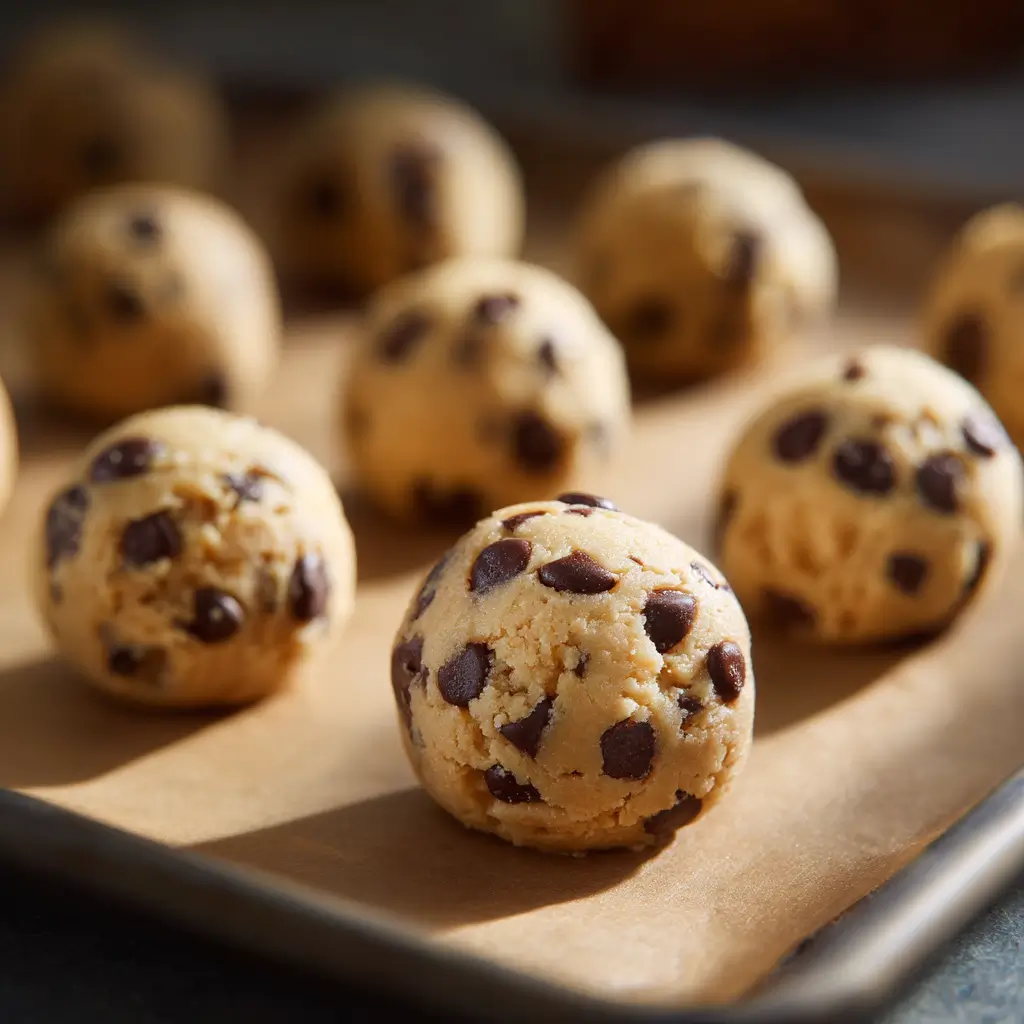
Step-by-Step Instructions
Here’s a simple, tried-and-true recipe for dairy free chocolate chip cookies that yield soft centers, golden edges, and rich chocolatey goodness.
Ingredients:
- 1 cup vegan butter (e.g., Earth Balance), softened
- 3/4 cup brown sugar, packed
- 1/2 cup granulated sugar
- 1 tbsp vanilla extract
- 2 tbsp oat milk (or any non-dairy milk)
- 2 1/4 cups all-purpose flour
- 1 tsp baking soda
- 1/2 tsp sea salt
- 1 1/2 cups dairy-free chocolate chips (e.g., Enjoy Life)
Optional Add-ins:
- 1/2 cup chopped walnuts or pecans
- Flaky sea salt for topping
Instructions:
- Cream the vegan butter and sugars in a large bowl using a hand mixer or stand mixer until light and fluffy (about 2–3 minutes).
- Add the vanilla and non-dairy milk, mixing until fully incorporated.
- In a separate bowl, whisk together flour, baking soda, and salt.
- Slowly mix the dry ingredients into the wet until a smooth dough forms.
- Fold in the dairy-free chocolate chips and any optional mix-ins.
- Scoop the dough into 1.5-inch balls and place on a parchment-lined baking sheet. Chill for 20–30 minutes for better structure.
- Preheat your oven to 350°F (175°C).
- Bake for 10–12 minutes, or until edges are golden and centers look just set. Do not overbake.
- Let cookies cool on the pan for 5 minutes, then transfer to a wire rack.
Your dairy free chocolate chip cookies are now ready—crispy on the edges, soft in the center, and full of melt-in-your-mouth chocolate goodness.
Tips for Chewy Centers and Crispy Edges
- Chill the dough for 30 minutes or more. It helps prevent spreading and enhances the cookie’s chewiness.
- Use a mix of brown and white sugars. Brown sugar adds moisture and chew, while white sugar helps with crisp edges.
- Underbake slightly. Cookies continue baking on the hot tray even after being removed from the oven.
- Tap the tray gently halfway through baking to create perfect ripples on top—an Instagram-worthy touch.
Want something to wash down your cookies with? Discover our dairy-free protein shakes for a satisfying, balanced treat.
Creative Twists on Dairy-Free Chocolate Chip Cookies
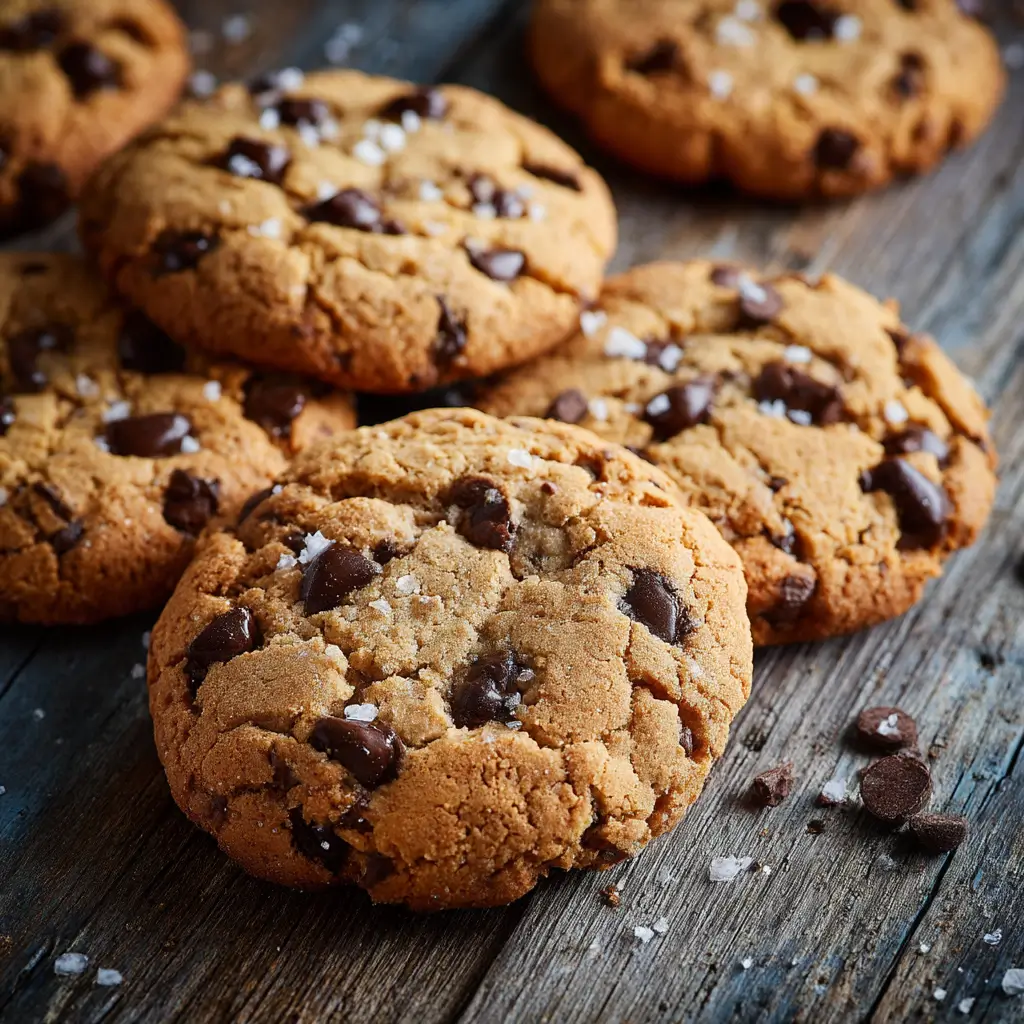
Add-Ins: Nuts, Sea Salt, and More
Once you’ve mastered the basic recipe for dairy free chocolate chip cookies, it’s time to level up your cookie game. Whether you’re aiming for a gourmet finish or just something different, these add-ins bring incredible flavor and texture:
- Toasted Nuts
Walnuts, pecans, and almonds add crunch and richness. Toast them lightly before folding into your dough to deepen their flavor. - Sea Salt Flakes
A light sprinkle of flaky sea salt on top right after baking adds a luxurious contrast to the sweetness of the chocolate. - Dried Fruit
Chopped dried cherries, cranberries, or apricots add a chewy, tangy twist that pairs beautifully with dark chocolate. - Cinnamon or Espresso Powder
Add 1/2 teaspoon of either to your dry mix for a subtle background note that enhances the chocolate flavor. - Caramel Bits or Swirls of Peanut Butter
These make for gooey, indulgent cookies that feel like a dessert fusion.
| Add-In | Flavor Boost | Texture Impact |
|---|---|---|
| Chopped Pecans | Nutty richness | Crunchy |
| Dried Cranberries | Tart sweetness | Chewy |
| Sea Salt Flakes | Sweet-salty kick | Crisp surface |
| Espresso Powder | Deep chocolate | Slightly firmer |
| Swirled Peanut Butter | Savory-sweet | Gooey, rich |
These upgrades are easy to incorporate into your dairy free chocolate chip cookie dough—just fold them in with the chocolate chips before baking.
Gluten-Free and Vegan-Friendly Versions
The best thing about dairy free chocolate chip cookies is that they’re naturally easy to convert to other dietary needs, like gluten-free or fully vegan.
To make them gluten-free:
- Substitute all-purpose flour with a 1:1 gluten-free baking blend that includes xanthan gum.
- Avoid almond flour alone—it lacks structure for traditional cookies unless combined with other flours.
To make them fully vegan:
- The base recipe already avoids dairy.
- Use flax eggs (1 tbsp ground flax + 3 tbsp water = 1 egg) to replace any egg in alternative recipes.
- Double-check that your chocolate chips and butter substitute are labeled vegan.
Pro Tip: When baking gluten-free cookies, let the dough rest for 20 minutes before baking to reduce grittiness.
These versions still deliver chewy centers and gooey chocolate pockets—without compromising dietary restrictions.
Storage and Shelf Life of Dairy-Free Cookies
How to Keep Cookies Soft Longer
Once you’ve baked the perfect batch of dairy free chocolate chip cookies, the last thing you want is for them to go stale. Fortunately, with the right storage methods, you can preserve that chewy texture and rich flavor for days.
Here’s how:
- Cool Completely
Before storing, always allow your cookies to cool fully on a wire rack. Trapping heat can cause condensation, which leads to sogginess or spoilage. - Use an Airtight Container
Store your cookies in an airtight container at room temperature. To maintain softness, toss in a slice of bread—the cookies will absorb the moisture from the bread and stay soft. - Separate with Parchment Paper
If stacking cookies, place parchment or wax paper between layers to prevent sticking and crumbling. - Keep Away from Heat and Light
Avoid leaving your cookies near heat sources or windows. Sunlight and warmth can accelerate staleness.
| Storage Tip | Shelf Life | Texture Result |
|---|---|---|
| Airtight container, room temp | 4–5 days | Soft and chewy |
| Fridge (sealed container) | 7–10 days | Firmer, still chewy |
| Freezer (raw dough) | 2–3 months | Fresh-baked on demand |
| Freezer (baked cookies) | 1–2 months | Just-thawed softness |
Freezing and Reheating Tips
Freezing is a game-changer when it comes to long-term cookie planning. Whether you want to bake on demand or store leftovers, here’s how to do it right:
- To Freeze Dough: Scoop dough balls and flash-freeze on a tray for 1 hour. Transfer to a zip-top bag and label. Bake from frozen at 350°F, adding 1–2 extra minutes to the bake time.
- To Freeze Baked Cookies: Once cooled, place cookies in a single layer in a freezer bag. Use parchment between layers if stacking. Thaw at room temp or warm in a 300°F oven for 3–5 minutes.
- Pro Tip: Freeze half your batch immediately after mixing to prevent overindulgence—and always have fresh dairy free chocolate chip cookies on hand when cravings hit.
This method also works beautifully when using nut butters or gluten-free flours.
Troubleshooting Common Baking Issues
Why Are My Dairy-Free Cookies Flat or Crumbly?
Even experienced bakers run into cookie fails now and then. If your dairy free chocolate chip cookies didn’t turn out quite right, don’t worry—it’s often an easy fix.
Problem: Cookies Spread Too Much (Flat Cookies)
Possible Causes:
- Butter too soft or melted
- Dough not chilled before baking
- Too much sugar or too little flour
Solutions:
- Chill dough for at least 30 minutes
- Use vegan butter straight from the fridge (not melted)
- Add 1–2 tablespoons of flour if dough feels too soft
Problem: Cookies Are Dry or Crumbly
Possible Causes:
- Overbaking
- Not enough fat or liquid
- Incorrect flour measurement
Solutions:
- Remove cookies when edges are set but centers are soft
- Spoon flour into measuring cup, then level—don’t scoop directly
- Add 1–2 teaspoons of extra non-dairy milk for softer dough
How to Fix Dough Consistency Without Dairy
Sometimes your dough just feels off—too sticky, too dry, or just not holding together. Here’s how to balance it when you’re working without traditional dairy:
| Dough Problem | Fix Without Dairy |
|---|---|
| Too Sticky | Add 1 tbsp flour at a time until pliable |
| Too Dry/Crumbly | Add 1 tsp oat milk or almond milk |
| Too Soft/Greasy | Chill for 1 hour; reduce butter next time |
A lot depends on the butter and milk substitute you’re using. Some brands contain more water, which can affect consistency. That’s why it helps to mix your dough, test one cookie, and adjust before baking the full batch.
Looking for more info on plant-based swaps? Don’t miss our is vegan dairy-free article for a clear breakdown of ingredients.
With these quick fixes, you’ll troubleshoot your way to the perfect batch of dairy free chocolate chip cookies every time.
Nutritional Benefits and Lifestyle Fit
Calories and Nutritional Profile of Dairy-Free Cookies
Just because you’re skipping dairy doesn’t mean you’re skipping indulgence. Dairy free chocolate chip cookies can still be rich, gooey, and satisfying—while being easier on your stomach and your health.
Here’s a general nutritional snapshot for one standard cookie (using vegan butter and oat milk):
| Nutrient | Approx. Per Cookie |
|---|---|
| Calories | 150–180 kcal |
| Total Fat | 7–9 g |
| Saturated Fat | 2.5 g (lower than butter) |
| Sugar | 10–12 g |
| Fiber | 1–2 g |
| Protein | 1.5–2.5 g |
These cookies are often lower in cholesterol and saturated fat compared to traditional versions. You’ll also avoid the inflammation and digestive discomfort that dairy can cause for lactose-intolerant individuals.
Want to go even healthier?
- Swap half the flour for whole wheat pastry flour
- Use coconut sugar or maple syrup instead of white sugar
- Add ground flaxseeds or chia for a fiber boost
Ideal for Lactose-Intolerant and Vegan Lifestyles
Whether you’re vegan, dairy-sensitive, or just mindful about what you eat, dairy free chocolate chip cookies check all the boxes:
- Vegan-Friendly: No animal products involved when made with plant-based butter, milk, and egg substitutes.
- Kid-Approved: Easy on young tummies and full of familiar flavors.
- Inclusive for Gatherings: Safe for friends with dairy allergies or intolerances.
- Flexible: Can be gluten-free, soy-free, or nut-free depending on your choice of ingredients.
Check out our dairy-free ice cream to create an unforgettable dessert sandwich with these cookies.
These cookies are more than just a dairy-free treat—they’re a delicious, adaptable, and inclusive snack that suits a variety of diets and occasions.
FAQs About Dairy Free Chocolate Chip Cookies
What can I substitute for milk in a cookie recipe?
You can replace milk with almond, oat, soy, or coconut milk. Each one brings different benefits—oat milk is creamy and neutral, while almond milk is light and slightly nutty. Use an unsweetened version to keep your dough balanced.
What can replace butter in chocolate chip cookies?
Popular dairy-free butter substitutes include vegan butter (like Earth Balance), refined coconut oil, and even nut butters like almond or cashew. Each has a unique impact on flavor and texture, so try different versions to find your favorite.
Does dairy free butter work in cookies?
Yes, many dairy-free butters mimic traditional butter in fat content and performance. For best results, chill the dough before baking and test your preferred brand in small batches.
What is the best non-dairy milk for dipping cookies?
Oat milk is the top pick—it’s rich, creamy, and closest to traditional milk in texture. Soy milk is also great for those wanting a protein-rich option.
Can I use sour cream instead of milk?
Yes, dairy-free sour cream can substitute for milk, especially in soft cookie recipes. It’ll add a slight tang and denser texture—perfect for chewy cookies.
Can I use olive oil instead of butter for cookies?
Absolutely. Light olive oil is best to avoid overpowering flavors. It will create a crisp, moist cookie, but make sure to slightly reduce the quantity compared to butter.
Conclusion
Making dairy free chocolate chip cookies at home is easy, satisfying, and opens the door to creative, inclusive baking. With the right butter and milk alternatives, you can achieve that classic texture and chocolatey bite—minus the dairy. Whether you’re adapting for allergies, health, or ethics, these cookies check all the boxes.
Looking for more ideas? Don’t miss our dairy-free banana bread for a moist, dairy-free companion recipe!
Follow us for more dairy-free delights and kitchen-tested recipes:
Pinterest: NYT Recipe on Pinterest
Facebook: NYT Recipe on Facebook


